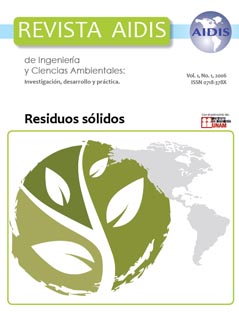Rehabilitación de suelo contaminado con hidrocarburos mediante la aplicación de lodos
Main Article Content
Abstract
Hydrocarbon spill are de main sources soil contamination, and most of their components are hard to degrade. Microorganisms can use hydrocarbons for their growth as the sole carbon source. The hydrocarbon removal effienciency was evaluated by laboratory tets. Sludge from a refinery wastewater treatment plant from hydrocarbon plant were added and mixed with the soil. The sludge acclimatization was first test by addition substrate, nutriment and hydrocarbon into biological reactor. Biomass produced by the reactor was added in 9 experimental boxes with contaminated soil. Boxes had 3 different treatments; the first treatment was sludge application, the second test was application of sluge and nutriments and the last test was application of sluge and non-ionic surfactant.
Results show a diesel hydrocarbon removal for 4 week of the aplication of sludge and surfactant. Removal efficiencies from 67 to 73 percent were obtained
Results show a diesel hydrocarbon removal for 4 week of the aplication of sludge and surfactant. Removal efficiencies from 67 to 73 percent were obtained
Article Details
How to Cite
[1]
Ramírez, González, A., Bautista Salazar, G. and Iturbe Argüelles, R. 2009. Rehabilitación de suelo contaminado con hidrocarburos mediante la aplicación de lodos. Revista AIDIS de ingeniería y ciencias ambientales: Investigación, desarrollo y práctica. 1, 1 (Nov. 2009).
